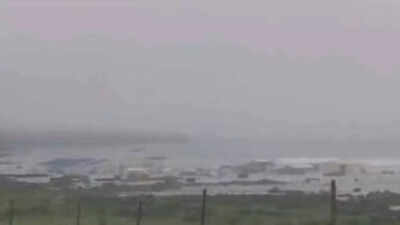Earthquakes and tsunamis remain among the most devastating natural disasters on the planet, especially for countries located along the Pacific “Ring of Fire.” Russia, the United States, and Japan face elevated seismic risks due to their positions on active tectonic boundaries. A recent 8.7-magnitude quake off Russia’s Kamchatka Peninsula on July 29, 2025, reignited global concerns about the unpredictable nature of these disasters. With the potential to strike without warning and unleash tsunamis across oceans, these events not only cause immense destruction but also test the limits of early warning systems and emergency preparedness.
What caused the massive 8.7 earthquake and tsunami in Russia?
The powerful 8.7-magnitude earthquake that struck near Russia’s Kamchatka Peninsula was the result of intense tectonic activity along the subduction zone where the Pacific Plate dives beneath the Okhotsk Plate. This region is part of the Pacific “Ring of Fire,” a horseshoe-shaped belt known for frequent seismic and volcanic activity. Over time, geological stress accumulates at this plate boundary until it is violently released in the form of an earthquake. In this case, the sudden vertical displacement of the seafloor during the quake triggered a tsunami, sending waves outward across the Pacific and prompting alerts in Russia, Japan, the US, and other Pacific regions.
The impact of the 8.7 magnitude earthquake and tsunami
The quake caused widespread tremors across the Kamchatka Peninsula and surrounding areas, including the Kuril Islands. Local authorities ordered evacuations in coastal towns, and tsunami sirens sounded as the first waves made landfall in Severo-Kurilsk. Though early reports indicated limited casualties, structural damage and community disruptions were significant. Japan’s Hokkaido coast recorded smaller wave impacts, while tsunami watches extended to Hawaii and the US West Coast. Transportation systems were briefly suspended, and coastal infrastructure faced stress tests. The incident highlighted the importance of regional preparedness and the interconnected risks shared by nations bordering the Pacific.
Why are Russia, the US, and Japan prone to earthquakes and tsunamis?
These three nations sit along the edges of major tectonic plates. Russia’s Far East lies near the boundary of the Pacific and Okhotsk plates, a known seismic hotspot. The US, particularly Alaska and California, is affected by the San Andreas and Cascadia fault systems, and also faces threats from undersea quakes near Hawaii. Japan, situated atop four converging plates, experiences some of the world’s most frequent and destructive earthquakes, with a long history of tsunamis. The geologic activity in these areas makes them especially vulnerable to powerful seismic events and subsequent flooding.
How earthquakes trigger tsunamis
When a large underwater earthquake abruptly shifts the seafloor, it displaces massive volumes of water. This movement creates tsunami waves that can travel across oceans at speeds of 500–600 mph. Depending on their size and the geography of coastlines, these waves can arrive within minutes to hours, with little time for response. The Kamchatka event demonstrated how such quakes can trigger wide-ranging alerts and affect regions thousands of kilometers apart. Japan’s 2011 Tohoku quake serves as a reminder of how devastating a tsunami can be when combined with dense coastal populations and critical infrastructure.
Preparedness and response strategies
All three nations have invested in earthquake-resistant infrastructure, early warning systems, and public education. Japan is known for its sophisticated seismic alert systems and frequent drills. The US operates tsunami detection buoys across the Pacific, while Russia has bolstered coastal monitoring and evacuation planning. Despite these efforts, the unpredictability of earthquakes makes them difficult to mitigate completely, especially in remote or heavily populated areas.
Outlook and continuous risks
The July 2025 Kamchatka earthquake is the latest reminder of the ever-present threat posed by tectonic instability in the Pacific Rim. As climate change and coastal urbanization increase exposure, maintaining and upgrading disaster preparedness is more important than ever. Earthquakes and tsunamis may be natural, but how societies respond determines the scale of human tragedy or resilience.







